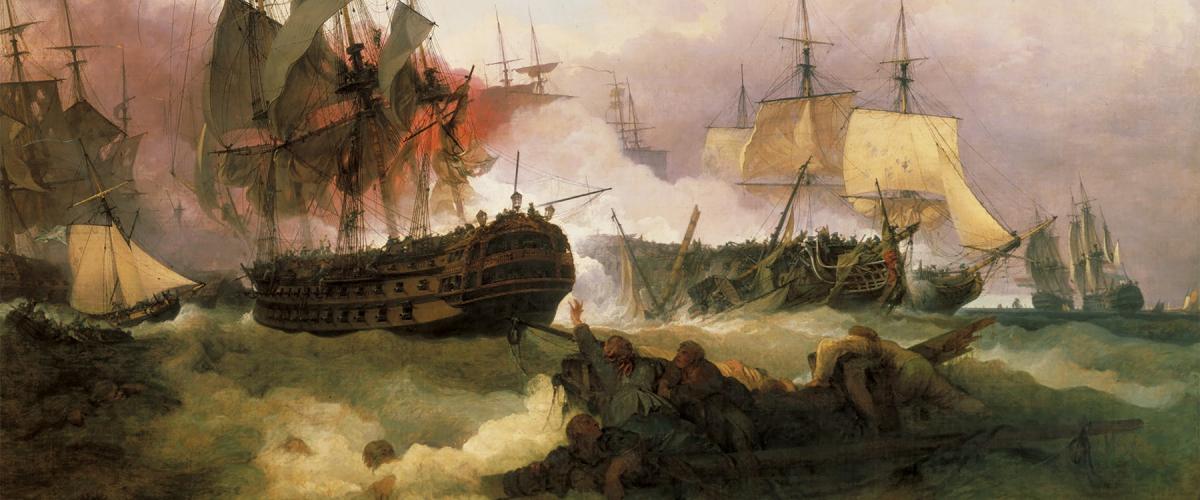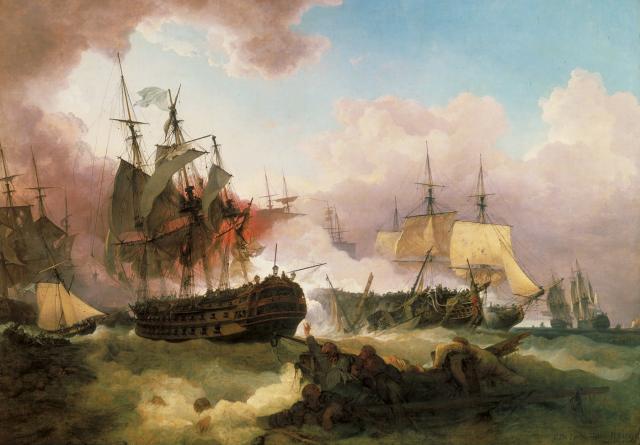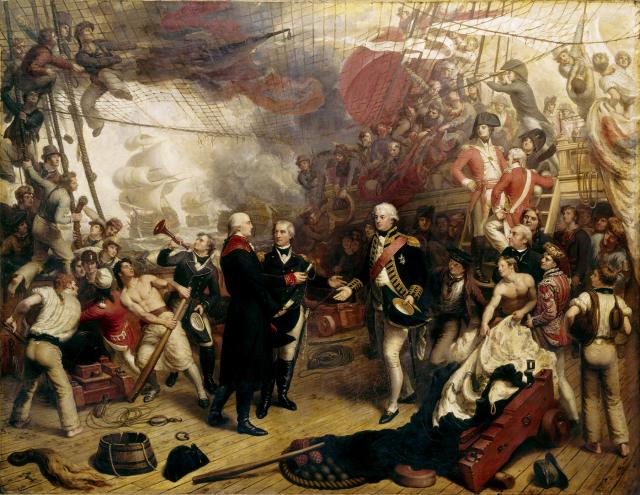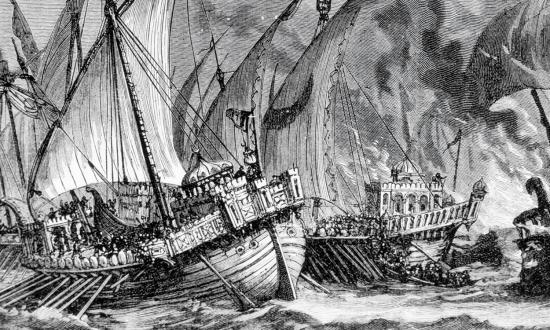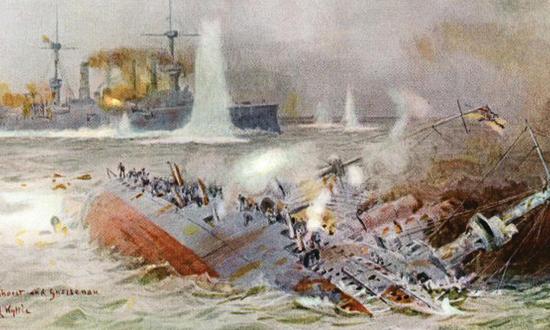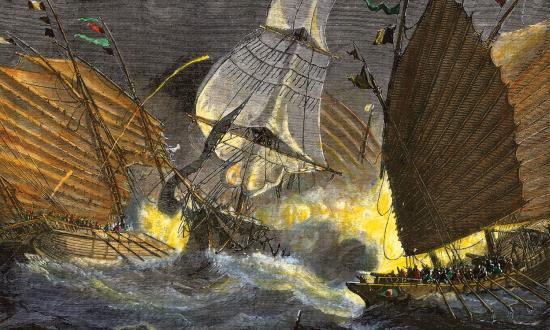Borne by the armies of Napoleon Bonaparte, the French revolutionary spirit spread like a virus across Europe in the late 18th century. When French forces marched into the Netherlands in 1795, revolution-zealous Dutchmen viewed it more as a liberation than an invasion. Their revolt marked the death of the Dutch Republic and the birth of the new, Napoleon-aligned Batavian Republic. Now, Napoleon found himself with a much-needed, beefed-up North Sea naval presence courtesy of his new allies the Dutch.
And the Dutch? Here they were, once again squared off against their preeminent sea-power archnemesis of old: Britain. From the early 17th century up to the recent past, the rivals had fought four naval wars; the most recent, concluding in the early 1780s, had made it clear that Britain had become the dominant force between the two.
The troublesome spring of 1797, however, was an inopportune time for John Bull suddenly to be facing his salient enemy of the present (the French) now in league with his recurrent enemy of the past (the Dutch). Napoleonic attempts at invading the British Isles threatened; public confidence in the Royal Navy was shaken in the wake of the recent shocking mutinies at Spithead and the Nore. Morale was low, and an assault from the sea seemed imminent.
But the Royal Navy’s North Sea Fleet still had some pluck in it—as did one of its most senior officers, the towering, larger-than-life Admiral Adam Duncan. The mutinies, combined with too many vessels laid up for repairs, had left him with but two loyal ships available for active service—two ships alone to keep a watchful eye on the Dutch coast.
The irascible 66-year-old Duncan did just that, using clever deception to bluff it out while keeping tabs on the fleet assembled off the Dutch island of Texel—a fleet gearing up for France’s impending invasion of Ireland. “The gallant old officer did not hesitate to proceed to, and maintain, his station,” notes the 19th-century British historian William Clowes. “By repeatedly signaling, as if to ships in the offing, he conveyed to the Dutch the impression that he was amply supported, and so induced them to remain in harbour while he was anxiously awaiting reinforcements.”
His brass paid off, and throughout the summer, other ships gradually began to join him off Texel. His Potemkin-village fleet had become the real deal, and Admiral Duncan was able to leave it on station while he made for Yarmouth to oversee repairs on additional vessels. He was there when the news arrived: The Dutch Texel fleet was on the move. And now, so was Duncan.
He caught up with the Dutch on the morning of 11 October 1797, off the coast of Kamperduin (Camperdown). The enemy fleet, sailing in line ahead, was commanded by the hard-fighting Vice Admiral Jan Willem de Winter. Duncan’s ships were strung out, and he ordered sails shortened on his vanguard vessels to allow the stragglers to catch up. The weather was heavy, and the British fleet was still in ragged disorder, as Duncan ordered his ships to cut through the enemy line and engage the Dutch in close action from the leeward.
The British formation had clustered into two groupings—with Duncan in his flagship HMS Venerable leading the forward group and his second-in-command, Vice Admiral Richard Onslow in HMS Monarch, in the rear. Onslow’s ships busted through the Dutch line first, blasting raking broadsides into the vessels on either side as they shot the tight gaps, isolating targets and overwhelming them as the rear of the Dutch line devolved into chaos, one brutally battered ship after another surrendering to Onslow’s force amid the roiling seas and pounding rain.
To the north, Admiral Duncan was having a rougher go of it. His Venerable was in the thick of it with three attacking ships at once. He and other vessels that had broken through the Dutch line found themselves surrounded now, being pummeled by Admiral de Winter’s flagship Vrijheid and others. When Dutch cannon fire brought down the top of the Venerable’s mainmast, it took the flag of the Admiral of the Fleet with it—a dangerously misleading indication that the British had struck their colors and surrendered. A young sailor named Jack Crawford swiftly climbed up amid heavy fire and nailed the flag to the mast. By risking his neck to restore the flag aloft, he had kept the fight alive. History would remember him as “the Hero of Camperdown.”
As the situation grew more dire, deliverance came with a fresh roar of cannon: Onslow’s ships, having neutralized the Dutch rear guard, now entered the fierce fight raging toward the van, arriving in time to turn the tide and force a reluctant de Winter to surrender. When the vanquished Dutch vice admiral subsequently came aboard the Venerable and offered his sword, Duncan politely refused it, preferring instead to shake hands with a fellow officer who had fought bravely.
The Dutch fleet had been bested in the bloodiest sea fight since the British and Dutch had tangled in the Four Days’ Battle back in 1666 (See “Four Days in 1666,” June 2021, p. 8). Parades, fanfare, and the singing of celebratory ballads erupted across Britain for what was seen as the Royal Navy’s greatest-ever victory over a peer adversary (a victory whose luster would all too quickly fade, eclipsed by a little fracas at a place called Trafalgar eight years later). The threat of invasion had passed, and the unpleasant memory of the Spithead and Nore mutinies was overshadowed.
But the endemic problems that had fostered those mutinies had not gone away. And one of the ships that came to the rescue of Admiral Duncan at the Battle of Camperdown happened to be commanded by a man named William Bligh, a captain whose name soon would be forever attached to mutiny—and a ship named HMS Bounty.
Sources:
William Laird Clowes, The Royal Navy: A History from the Earliest Times to the Present, vol. 4 (London: Sampson Low, Marston and Company, 1899), 325–33.
Christopher Lloyd, St Vincent & Camperdown (New York: Macmillan, 1963), 94–163.
Local Studies Centre, Sunderland City (UK) Library, “Jack Crawford.”
Noel Mostert, The Line Upon a Wind: The Great War at Sea, 1793–1815 (New York: W. W. Norton, 2007), 225–36.
Digby Smith, Navies of the Napoleonic Era (Atglen, PA: Schiffer Military History, 2004), 51–57.



